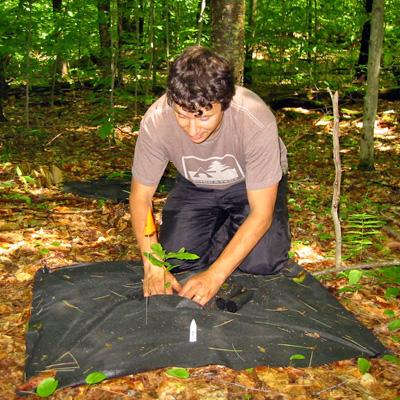Restoring American Chestnut and Associated Products to the Northern Forest

The American chestnut tree, once prized throughout the eastern United States for straight-grained, rot resistant wood and nutritious nuts, was removed as an overstory tree nearly a century ago by a fungal blight introduced to the U.S. Restoration involves hybridizing American chestnut with blight resistant Chinese chestnut, followed by backcross breeding resistant offspring with American chestnut, primarily from the heart of its former range. For restoration in the Northern Forest, where chestnuts are vulnerable to winter injury, breeding requires genetic material that provides for growth and survival in colder environments.
The American Chestnut Foundation helped NSRC researchers acquire nuts of American chestnut (from a range of geographic sources), Chinese chestnut, and red oak (a native competitor in the north). Laboratory tests revealed a gradation in seed cold hardiness, with Chinese chestnut the least cold tolerant, red oak the most cold tolerant, and American chestnut intermediate. Sources of American chestnut from southernmost regions were least cold tolerant, and differences among sources within regions indicate that assessment of individual sources is necessary for identifying more cold tolerant stock.
Researchers grew seedlings from the nuts and planted them on Vermont’s Green Mountain National Forest under three overstory tree densities: open, partial, and dense. American chestnuts planted in the open grew the tallest but suffered the most winter injury because they lacked protection from overstory trees, but findings varied by seed source. Plantings will remain a long-term resource for identifying genetic stock and management alternatives to bolster American chestnut cold tolerance for restoration in the Northern Forest, a region critical to species range extension given predicted climate change.
